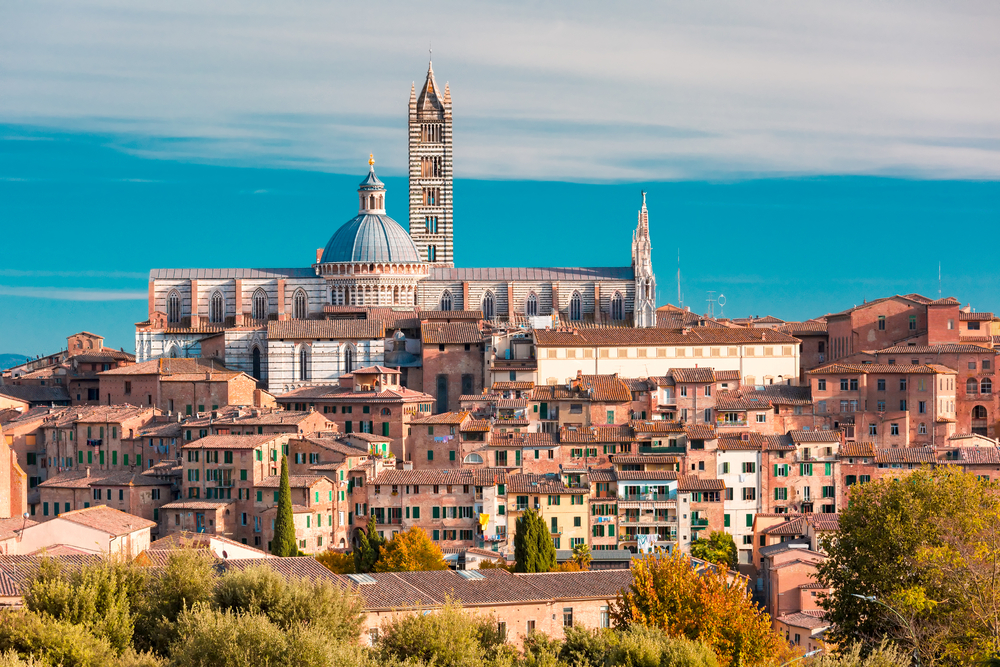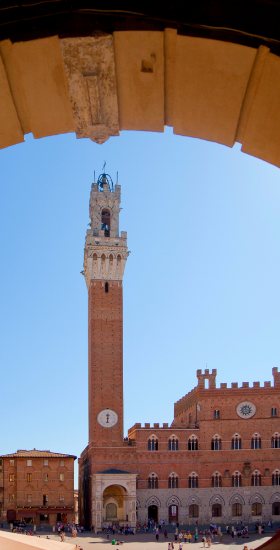
What to visit in Siena
Jul 21, 2020
What to Visit in Siena
Siena is one of Italy’s best medieval towns, located right in the heart of Tuscany.
It was built on three hills and surrounded by strong walls, the city inside the walls, is dominated by fine examples of Gothic architecture.
To explore and appreciate what Siena offers, you will need more than just one day. Siena also makes an excellent base city for other excursions in Tuscany, as it is not far from charming towns such as Pienza, Chianti, San Gimignano, and towns world-famous for wine, such as Montalcino and Montepulciano.
The city has one of the world’s most unique squares – Piazza del Campo – (shaped like a shell with scalloped edges) and it is where the world-famous Palio of Siena takes place.
Best attractions in Siena
If you plan to visit Siena, there are plenty of beautiful monuments and architecture that you shouldn’t miss. Not to mention, the range of fantastic museums and galleries that Siena has to offer. Siena’s historic city center is one of the best-preserved in the region and is a true joy to explore. You can easily take a guided walking tour to fully explore it.
Here is what to see in Siena:
Piazza del Campo – Campo Square
Campo square, or as the locals call it, Piazza del Campo is one of the most interesting squares in the world. Piazza del Campo has a shell shape and it is divided into nine segments, in memory of the Nine lords that ruled the city back in the golden period of the 13th century.
It is located in the heart of Siena and it is where the three ridge roads leading to the city meet. The square is dominated by the Public Palace (Palazzo Pubblico) and its Torre del Mangia (open to the public), from which you can get an amazing view of the city.

Cathedral of Santa Maria Assunta
Cathedral of Santa Maria Assunta or Duomo di Siena is for sure one of Italy’s finest Gothic churches. Siena’s cathedral is stunning on the inside as well as on the outside, featuring the work of Italy’s finest artists of the day: Nicola and Giovanni Donatello, Pinturicchio, Pisano, Lorenzo Ghiberti, and Bernini.
Siena Cathedral usually has long lines to buy tickets so if you want to explore the interior, you can consider buying a Skip-the-Line Siena Cathedral Duomo Complex Entrance ticket.

Public Palace
The Public Palace of Siena started to build back in 1288 and finished in 1310. This palace was built to host the nine governors of Siena Republic. It was then renovated in the seventeenth century.
The building houses one of the most important Italian museums: the Civic Museum where masterpieces such as the Majesty and the Guidoriccio da Fogliano by Simone Martini and the Good and Bad Government of Ambrogio Lorenzetti are there to be seen.

Siena Civic Museum
The Civic Museum of Siena is located in Campo Square, inside the Public Palace.
The museum was inaugurated in the 1930s and it takes you on a historical journey of the city and it features the precious frescoes and decorations of the building that is called Palazzo Pubblico in Italian.
You will also find important works of art here, including paintings from the sixteenth up to the eighteenth centuries and, in the chapel, several wooden sculptures, a collection of golden religious objects, and ancient decorations.
Mangia Tower
Mangia tower, also known as Torre del Mangia has its own Bell also called Campanone, that was installed in 1666 and followed the cast bell of 1349. The present bell weighs 6,760 kilos and is located above the bell cell. The Campanone installation wasn’t perfectly successful, to make it sound acceptable when it chimed it was necessary to remove a piece. Still, the sound is out of tune, especially when it chimes automatically.

Biblioteca Piccolomini
The Piccolomini Library was named after cardinal Francesco Piccolomini Todeschini (later Pope Pius III ) built in 1492. It is the monumental environment of the Siena cathedral, located along the left aisle, before the transept, it was built to preserve the very rich book heritage collected by Pope Pius II.
Then, it was completely frescoed between 1502 and 1507 by Pinturicchio and aids, including the Bolognese Amico Aspertini and the young Raffaello Sanzio.

Siena National Gallery
If you like history and art and you plan to spend a few days in Siena, you should absolutely make your way to Siena National Gallery that is also called the Pinacoteca Nazionale Art museum. It’s the main art museum of the city and here you can find a rich collection of masterpieces from the famous Sienese school of artists, which created mainly large, majestic altarpieces with golden decorations.
Siena National Gallery is housed in two old palaces, Buonsignori and Palazzo Brigidi in a quiet street not far from the Cathedral.
Church of San Domenico
The great Basilica of San Domenico is linked to the veneration of Saint Catherine of Siena. It was built between 1225 and 1265, the same as the Dominican convent, and is a fully gothic building in its formation. The gothic style manifests itself here in the giant and severe architecture, constructed entirely in brick.

Salimbeni Square
Salimbeni Square is a scenic site, renowned above all for the presence of the majestic palace of the same name which, inside, houses the headquarters of Banca Monte dei Paschi di Siena.
Salimbeni Palace, therefore, represents the main historical building in the square, which can only be accessed through the famous via Banchi di Sopra. Here you will also find Tantucci Palace and on the right side Spannocchi Palace.

Saint Catherine Sanctuary
The figure of Catherine is a special one in catholicism: spending her life within the home and on the streets of the city instead of in a convent, her being secular rather than a nun, did not prevent her from entering into deep communion with God and living according to his teachings.
The sanctuary is divided into various rooms: once you have crossed the so-called Portico dei Comuni, you arrive at a small loggia atrium, followed by a second atrium. On the right side, you will find the Church of the Crucifix and the Chapel of the Confessions, while on the opposite side overlooks the Kitchen Oratory. Also on the left is a staircase leading to the lower floor, where the Chamber Oratory is located.

Medicea Fortress
Medici Fortress, designed by Baldassarre Lanci and built in 1560, with the intent to obstruct any initiative by the Sienese in regaining independence. The imposing fortress stands on the site where a few years before Charles V gave the order to build his fortress.
At the end of the eighteenth century, the fortress was demilitarized and from 1937 transformed into a public garden, from which it is possible to admire a splendid panorama of the city and the hills that surround it. Today it is the site of temporary exhibitions and the permanent Italian Enoteca has been set up in the basement with some rooms designed to stay and to taste some of the finest Italian wines.
Baptistery of Santa Maria Assunta
The baptistery was built between 1316 and 1325 by Camaino of Crescentino, in Gothic style, it is characterized by an unfinished facade at the top. Inside you can admire the source baptismal hexagonal realized in marble, enamel and bronze. The frescoed hall is divided into 3 aisles of 2 large columns. A wonderful example of Gothic art.
 Spanish
Spanish French
French German
German



